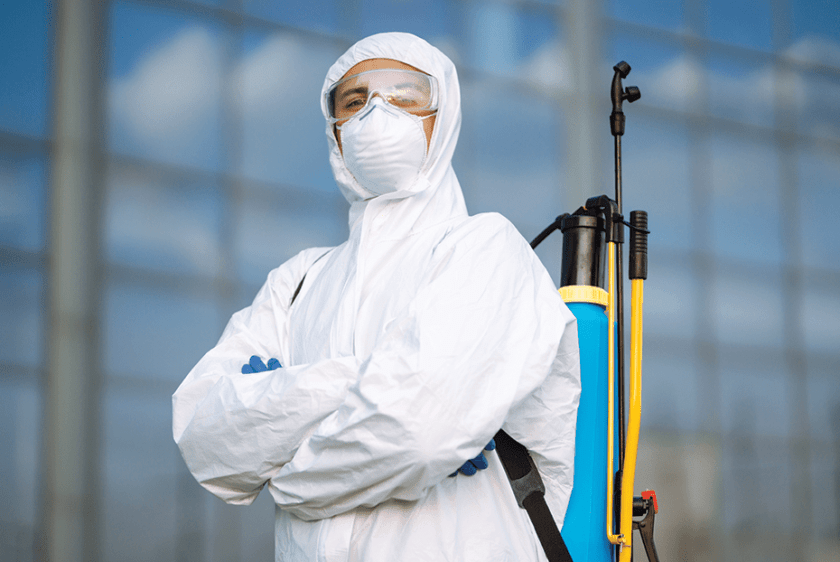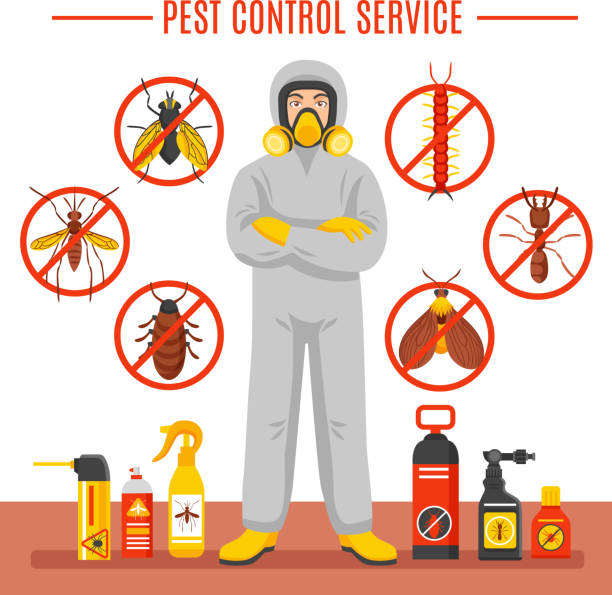Thorough Pest Control for year-round protection from pests.
Eco-Friendly Bug Control Approaches for Handling Wildlife in Urban Locations
Urban locations usually find themselves at the junction of human activity and wildlife, resulting in special challenges in parasite monitoring. Environment-friendly methods emphasize lasting conjunction, utilizing methods such as environment alteration and all-natural repellents to mitigate human-wildlife conflicts. These methods not just shield the setting yet also enhance community engagement in wildlife management. As metropolitan populations remain to grow, understanding the dynamics of wildlife interactions becomes increasingly essential. What ingenious techniques can be carried out to make sure both environmental balance and urban safety? Exploring this question discloses an engaging landscape of possible options.
Recognizing Urban Wild Animals Dynamics
Recognizing Urban Wildlife Characteristics is necessary for establishing effective and eco-friendly bug control techniques. Urban locations are progressively becoming environments for various wild animals species, driven by aspects such as habitat fragmentation, food schedule, and human encroachment. Identifying these dynamics permits a nuanced method to pest monitoring that lines up with ecological principles.
Urban wild animals typically includes types such as raccoons, squirrels, and birds, which adjust to city environments, finding specific niches in eco-friendly areas, parks, and even suburbs. Their existence can lead to disputes with human beings, particularly when they manipulate personnels for food and shelter. Recognizing the behaviors and environmental duties of these species notifies methods that minimize unfavorable communications while promoting biodiversity.
Additionally, recognizing the interdependencies within urban environments aids in recognizing vital locations for habitat preservation and repair. This expertise contributes to the advancement of incorporated pest administration (IPM) techniques that think about the environmental equilibrium, therefore minimizing dependence on damaging chemicals. By cultivating coexistence between people and city wild animals, cities can create healthier atmospheres that profit both citizens and neighborhood ecosystems, paving the way for sustainable city living.
All-natural Repellents and Deterrents
All-natural repellents and deterrents supply a lasting option to traditional bug control techniques by using the power of nature to maintain undesirable types at bay. These environmentally friendly services usually use plant-based ingredients, important oils, and other normally happening compounds that discourage pests without damaging the setting.
One efficient natural repellent is peppermint oil, which is recognized to drive away rats and bugs. Its strong scent is undesirable to lots of insects, making it a popular selection for metropolitan settings. Vinegar and citrus peels can offer as deterrents, as their strong smells are normally uninviting to various wild animals.
Additionally, diatomaceous earth is an all-natural powder that can be spread out in areas vulnerable to parasite activity, properly drying out and hindering bugs without presenting risks to non-target species. Garlic sprays and neem oil are recognized for their capacity to fend off a large variety of bugs, including both bugs and larger wild animals.
Implementing these natural repellents not just reduces dependence on chemical pesticides yet likewise advertises a much healthier urban ecological community, promoting a more well balanced coexistence between people and wild animals. By utilizing these methods, city locations can efficiently handle parasite populaces while reducing environmental effect.
Environment Alteration Techniques
Effective habitat alteration strategies play an essential function in lasting parasite monitoring by altering the atmosphere to make it much less for pest problems. By understanding the ecological dynamics of metropolitan areas, homeowner can carry out critical alterations that deter pests while promoting biodiversity.
(Gopher Control)One primary method entails keeping correct hygiene. This includes routine waste removal, securing garbage bins, and removing standing water to reduce breeding websites for insects and rats. In addition, landscaping practices such as selecting native plants can boost ecological equilibrium, providing environments for advantageous organisms while reducing resources for bugs.
One more important approach is to secure entrance points in structures. Checking and repairing cracks in structures, walls, and windows can dramatically minimize insect access. Developing physical barriers, such as fencings or plant buffers, can hinder wildlife activity into human-inhabited locations.
Integrated Insect Monitoring Practices
Building upon environment adjustment techniques, incorporated pest monitoring (IPM) practices use a holistic technique to controlling bug populaces while reducing ecological impact. IPM integrates numerous techniques, consisting of organic, cultural, mechanical, and chemical controls, to accomplish reliable insect administration.
Organic control involves the intro of all-natural predators or parasites to lower pest populations. Social techniques, such as crop rotation and hygiene, interrupt pest life process and diminish their habitats - Pest Control. Mechanical controls, like catches and obstacles, provide instant alleviation from pest pressures without chemical treatment
Chemical controls are made use of as a last resort, concentrating on targeted applications that limit damage to non-target varieties and the atmosphere. The choice of environmentally friendly pesticides, when essential, is essential to the IPM framework. In addition, keeping an eye on insect populations and examining prospective damages assists notify decision-making, making certain that treatments are prompt and reliable.
Area Participation and Education And Learning

(Spider Control)Workshops and informative sessions can gear up locals with understanding regarding indigenous species, environment conservation, and effective non-toxic insect management techniques. Cooperation with colleges, regional organizations, and government firms better improves academic outreach, guaranteeing that vital info reaches varied target markets.
Furthermore, community-led initiatives, such as area clean-up days and environment restoration tasks, not just promote biodiversity but additionally enhance community connections. Pest Control. By encouraging homeowners to share their experiences and monitorings, neighborhoods can develop targeted approaches that attend to particular local look these up bug issues
Incorporating feedback from citizens into bug management intends allows an extra responsive and flexible technique to wildlife challenges. Eventually, informed and involved areas are vital to achieving lasting success in environmentally friendly bug control, bring about healthier metropolitan environments that respect both human and ecological demands.

Conclusion
In verdict, green bug control approaches deal sustainable services for handling urban wildlife. By focusing on environment alteration, making use of all-natural repellents, and implementing integrated parasite monitoring techniques, communities can foster an unified conjunction with neighborhood animals.